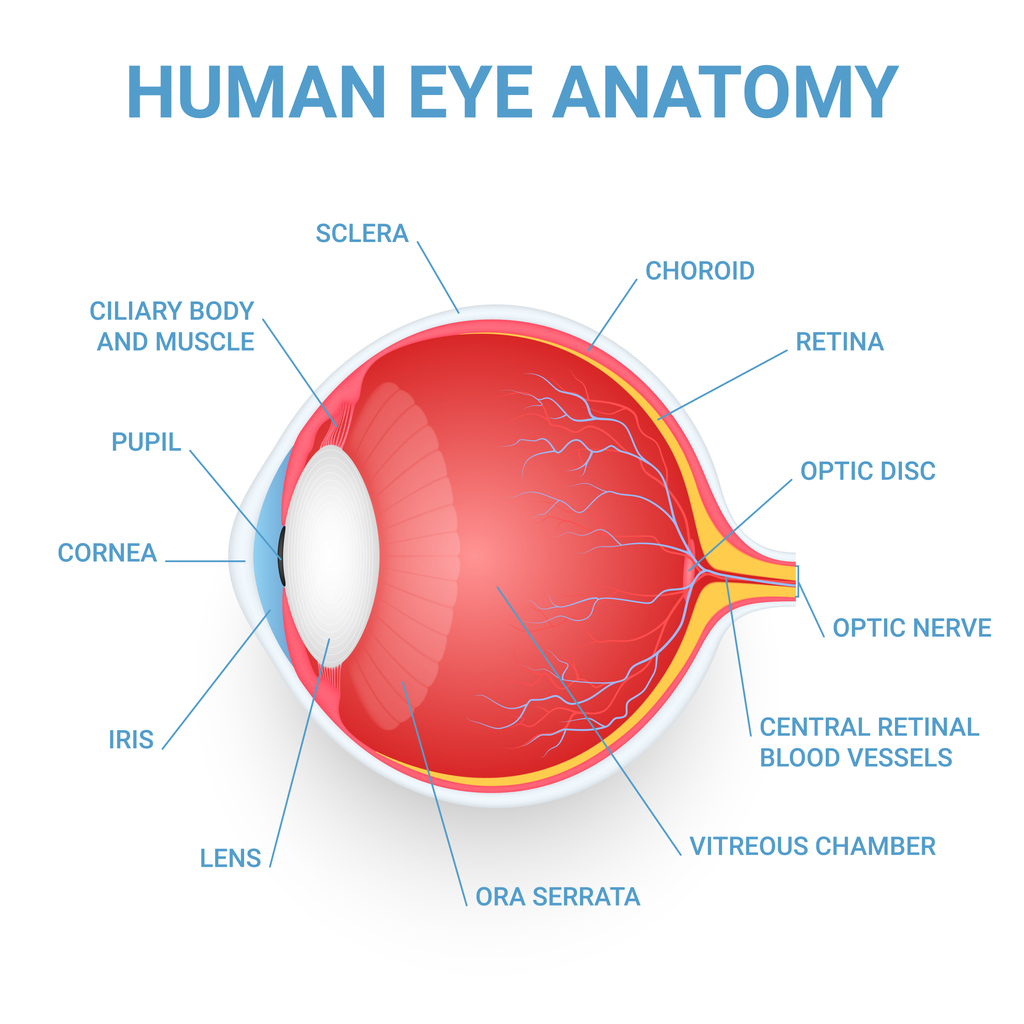ICL for Thin Cornea: An Effective Solution for Vision Correction
One advancement in the realm of vision health is the use of an Implantable Collamer Lens (ICL) for thin corneas, a condition not ideal for the popular LASIK eye surgery. If you’re puzzled about the mechanics of this surgical procedure, its benefits, or how it stands as a solution where LASIK surgery falls short, you’re not alone.
Understanding the intricacies of ICL can be daunting, but the right guidance can simplify it. Let’s delve into the causes and impacts of a thin cornea, understand various vision correction options, the specifics of EVO Visian ICL solution, and how Visionary Eye Doctors can help you manage your thin cornea concerns.

Understanding Thin Cornea
Understanding the term ‘thin cornea’ is important in grasping how ICL can benefit individuals with this condition. The cornea is the eye’s outermost layer that functions like a clear window that controls and focuses light entering the eye. A thinner cornea not only weakens the eye structure but can also hinder the eye’s ability to focus and result in vision problems.
Thin corneas occur due to a reduction in the central corneal thickness, and reasons can be genetic predisposition or certain medical conditions like keratoconus progression that cause thinning and eventual bulging of the cornea. It’s a condition of concern because normal corneal thickness is pivotal to accurate intraocular pressure measurement – a key detector of glaucoma.
Corneal thickness plays a significant role when it comes to surgical vision correction. A LASIK procedure involves the creation of a small flap in the cornea and then reshaping the underlying corneal tissue to improve vision. However, a thin cornea can put a patient at increased risk of complications from the procedure. This is because too much tissue would have to be removed to properly reshape the cornea, which could lead to a condition known as corneal ectasia. This potential risk is the reason why individuals with thin corneas are often deemed ineligible for LASIK.
There are various ways to manage this condition. Contact lenses are typically the first option provided to manage the condition, but they serve merely as support and do not combat the problem in the long run. In advanced cases of thin corneas, scleral lenses, which are larger than a standard contact lens, are considered for better comfort and visual acuity. Corneal crosslinking is another treatment that involves treating the eyes with vitamin B2 drops and ultraviolet light to strengthen the collagen fibrils in the cornea. However, the only definitive treatment till now has been a corneal transplant – a skilled but higher-risk procedure.
Exploring Options: Cornea Transplant, LASIK, PRK, Refractive Lens Exchange
Navigating your way through the different types of vision correction procedures can seem daunting. Today, you have various options at your disposal, each having its merits and potential downsides. Let’s examine some stand-out procedures in the realm of eye care.
Corneal transplantation, also known as keratoplasty, involves replacing part of the cornea with corneal tissue from a donor. This intricate process has been deployed to combat thin corneas, though it’s highly skilled and involves a degree of risk, including graft failure and potential sight-threatening complications.
LASIK, an acronym for laser-assisted in-situ keratomileusis, is a well-established and commonly used laser eye surgery. The procedure involves creating a small flap in the cornea, reshaping the underlying corneal tissue to correct refractive errors, and then placing the epithelial flap back in its original position. However, a significant downside attached to LASIK is that it requires a certain level of corneal thickness to be deemed safe. People with corneal thinning or with severe myopia are often ineligible for this procedure due to the amount of corneal tissue that would need to be removed.
Photorefractive keratectomy (PRK) is another laser eye surgery akin to LASIK and is commonly deployed when the cornea is too thin for LASIK. PRK, like LASIK, operates on the principle of reshaping the cornea but does not involve creating a corneal flap. Instead, the top layer of the cornea is removed, leaving it open to heal naturally post-surgery. Though often a suitable option for those with thin corneas, PRK generally requires a longer healing period and carries a small risk of complications, including infections and changes in corneal shape.
Refractive lens exchange, or lens replacement surgery, is another procedure where the eye’s natural lens is replaced with an artificial one. This method corrects refractive errors by replacing the eye’s natural lens with an artificial intraocular lens (IOL) that has a different focusing power. With refractive lens exchange, the thickness of the cornea is not an issue, making it a possible solution for those with thin corneas
Each of these procedures showcases progress within the field of eye care. Still, they also present certain downsides and limitations, especially for those with certain conditions or needs.

The ICL Solution
In the ongoing search for the most comprehensive and inclusive vision correction solution, EVO Visian Implantable Collamer Lenses (ICL) have emerged as a promising option, especially for individuals dealing with thin corneas.
ICLs, first introduced in the United States decades ago, were a groundbreaking step in the field of refractive surgery. For the first time, individuals with exceptionally high lens prescriptions and those with insufficient corneal thickness for LASIK could improve their vision significantly.
EVO Visian ICLs have capitalized on this landmark invention, improving it in terms of comfort and application. The material of EVO Visian ICL, known as Collamer, is a technologically advanced lens material designed to be 100% compatible with the body’s chemistry. This makes it exceedingly comfortable, and users won’t feel its presence in their eyes. As the Collamer is largely composed of collagen and water, it’s a supremely natural element and an excellent refractive surface that remains stable and quiet in the eye.
The EVO Visian ICL procedure is impressively swift and graceful, typically completed within 15 to 30 minutes. Most patients report an immediate improvement in eyesight. EVO Visian ICLs also offer remarkable characteristics such as anti-reflectivity and UV protection, making them a visionary choice for visual improvement.
Safety is crucial when considering invasive procedures. Here again, EVO Visian ICL scores high. Statistically, they are considered on par with, or safer than, wearing contact lenses in terms of infection risks. Yes, there may be a lack of familiarity with the concept of ICLs compared to traditional contact lenses, but akin to the perceived safety of flying in a commercial airplane versus riding in a car, options such as EVO ICL don’t just offer a revolutionary vision correction method; they also present an utterly safe treatment choice.
Are you eligible for EVO Visian ICL? This procedure is typically suitable for individuals aged between 21 to 45 years, who are nearsighted and have not experienced any change in eyeglass prescription of more than 0.5D in a year. It’s notably effective for those with thin corneas, dry eyes, or unusually high refractive errors. Pregnant individuals will have to wait out their term before opting for this procedure.
EVO Visian ICL, in short, delivers where LASIK and other refractive procedures might falter, promising an advanced vision correction option for people with thin corneas and a range of refractive errors.
How Visionary Eye Doctors Can Help
Deciding on the best vision correction procedure is a significant decision that should be made with proper guidance and confidence. This requires experienced professionals who understand your specific vision needs and can comfortably navigate the evolving landscape of cutting-edge eye treatments. At Visionary Eye Doctors, we offer the experience, tools, and technology to guide you through this journey.
Our team is proficient in using advanced diagnostic technology for a holistic evaluation of your eye health. An attribute of our expertise lies in our ability to administer the most comprehensive eye examinations available today. These examinations allow our esteemed surgeons to assess your candidacy for procedures like EVO Visian ICL and formulate a personalized, long-term plan for your optimal vision.
Not just restricted to the unique technology of EVO Visian ICL, we also leverage powerful diagnostic tools like Optical Coherence Tomography. This imaging technique provides high-resolution images of the eye structures, aiding us in diagnosing and treating a multitude of vision problems.
Importantly, at the heart of our practice is the enduring trust we’ve established with our patients. We continually strive to nurture this bond by providing you with the most accurate, efficient, and effective care. We maintain an open and honest communication channel, ensuring you are well informed at every stage of decision-making.
If thin corneas or high refractive errors have made you believe that effective vision correction is out of your reach, let us show you a different perspective. EVO Visian ICL offers an opportunity to attain better vision than ever before, and our expert team at Visionary Eye Doctors is prepared to guide you through every step of that journey.
Discover how Visionary Eye Doctors can help you see your world more clearly and brightly. Get in touch with us at (301) 591-1763 to schedule your consultation today.



